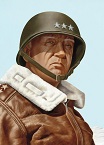BBfanboy
Posts: 18046
Joined: 8/4/2010
From: Winnipeg, MB
Status: offline

|
quote:
ORIGINAL: Chris21wen
quote:
ORIGINAL: kennonlightfoot
I finally got to the Let's Play video that explains using these Yes/No flags. The description of what they do implies it is telling the game how much supply to request and stockpile. But this leads to another question, does the game actually do anything with these numbers and flags?
Since I am playing the game with the Automatic convoy system turned off, I don't see the game doing anything with these settings. It won't have any supply or fuel to stockpile unless I create cargo and tank transports to move it there. It won't have anything to stockpile unless I move more than is being used.
So appears to me these are just reminder flags and numbers so when I check the base I know I meant to build it up.
Or, does it actually cause the game to do something in the back ground?
It works, but understanding it is a different thing so here's my interepation. I'm assuming one route here but there's few (none!) locations on the map where this applies.
If there's no supply then nothing moves.
Each base keeps 3x its requirement so won't pass on supply if it has less.
Supply only moves during the overland supply phase from one base to the next connected base.
From this logically to move supply from chain of bases a to d it would take three turns as it goes though b and c using the shortest movement route. Setting b or c to stockpile will stop the flow? Turning them up will siphon off the flow reducing how quickly d gets to it's requested amount.
One question thing I've never got is will base D draw supply from more than on base, say A and B if B is not in the chain?
Use the 5 key you can see the actual % supplied from one base to any hex it can acutually reach.
If my perceptions on this is crap please uncrap me.
A couple of caveats:
LCUs outside a base can still draw supply from the base no matter the stockpiling or increased draw settings for the base. As in real life, front line troops have priority for their needs.
And the 5 key revelation is the potential for the supply to reach that hex. The numbers on the map obviously exceed 100, so the number for a single hex is only relevant if it held an LCU demanding all that supply and none of the other hexes had any demands for the supply. And of course, better transportation corridors are more likely to conduct supplies to the target hex than rough/jungle/forest/mountain/swamp terrain hexes.
_____________________________
No matter how bad a situation is, you can always make it worse. - Chris Hadfield : An Astronaut's Guide To Life On Earth
|
 Printable Version
Printable Version









 New Messages
New Messages No New Messages
No New Messages Hot Topic w/ New Messages
Hot Topic w/ New Messages Hot Topic w/o New Messages
Hot Topic w/o New Messages Locked w/ New Messages
Locked w/ New Messages Locked w/o New Messages
Locked w/o New Messages Post New Thread
Post New Thread